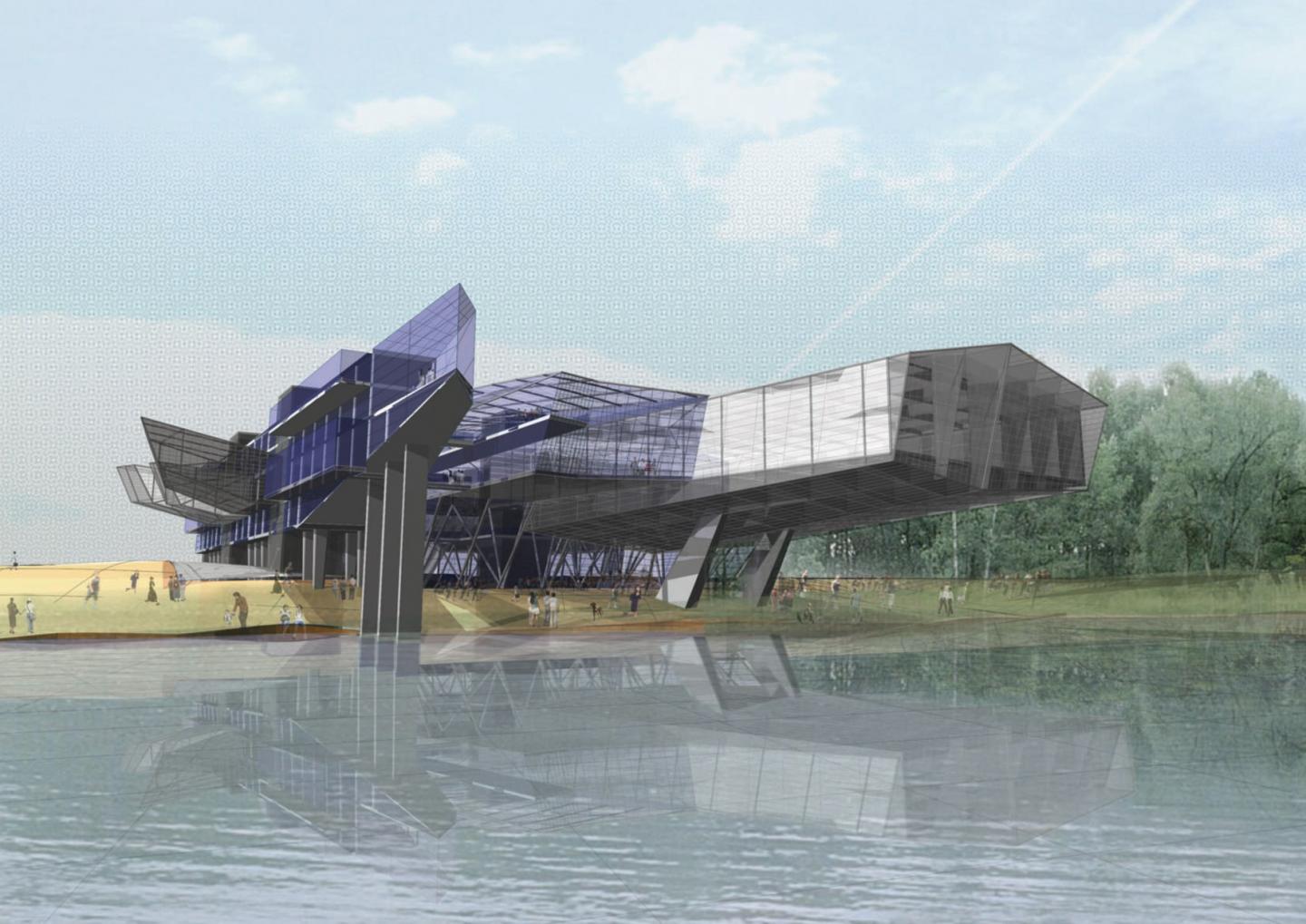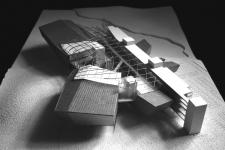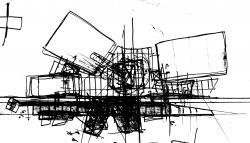(Google Translation) The new Estonian National Museum is on the outskirts of Tartu, a town in southern Estonia arise. Axes, movements and force fields to determine the orientation of the various bodies of the building. The fascination of the reflection of the Capitol of Chandigarh in the water was crucial for the communication of that building with the lake. The issuing body break out from the general structure and form different components of Estonias memory landscape. The main floor of the museum hovers above the landscape, which passes through under the building and the whole free ticket zone it resides. The public space crystallized on the ground floor of the building and continues in the countryside continued.
(German)
Das neue Estnische Nationalmuseum soll am Stadtrand von Tartu, einer Stadt im Süden Estlands, entstehen.
Achsen, Bewegungen und Kraftfelder bestimmen die Ausrichtung der verschiedenen Körper des Gebäudes.
Die Faszination der Spiegelung des Kapitols von Chandigarh im Wasser war ausschlaggebend für die Kommunikation dieses Gebäudes mit dem See. Die Ausstellungskörper brechen aus dem Gesamtgefüge aus und bilden weitere Bausteine der estnischen „Memory landscape“. Das Hauptgeschoss des Museums schwebt über der Landschaft, welche unter dem Gebäude durchwandert und die gesamte „Ticket free zone“ beherbert. Der öffentliche Raum kristalliert im Erdgeschoss des Gebäudes und setzt sich in der Landschaft weiter fort.
2005
2005
Lukas Göbl, Oliver Ulrich & Boris Steiner







